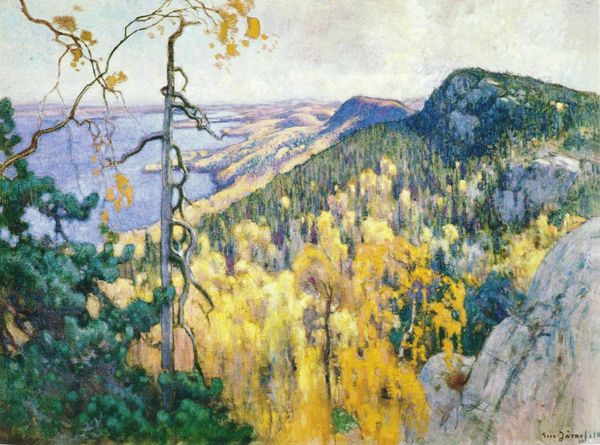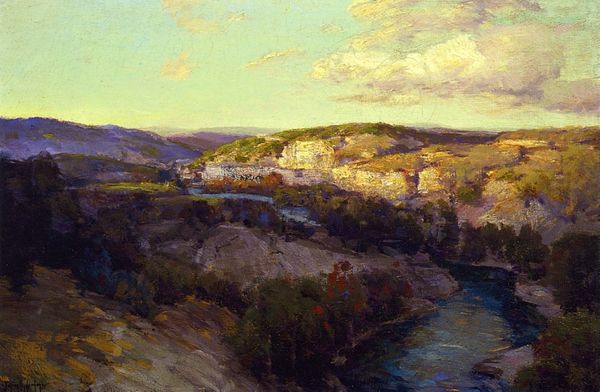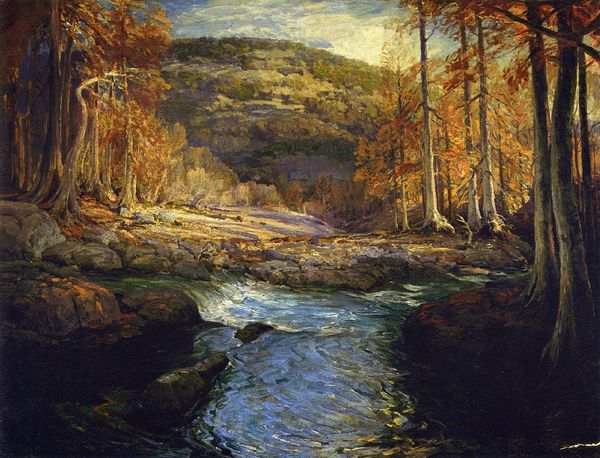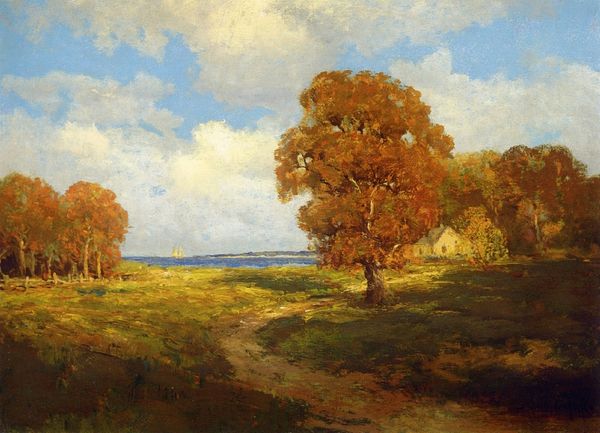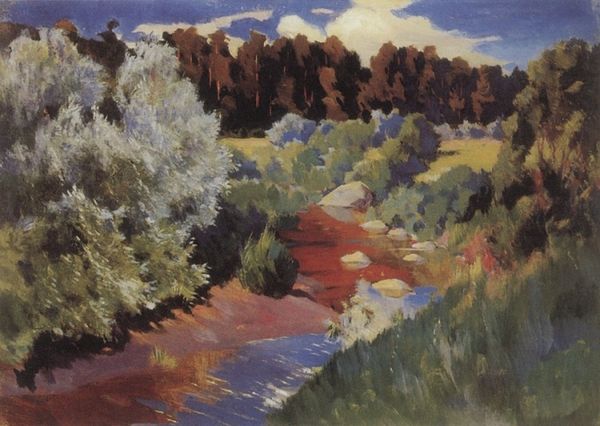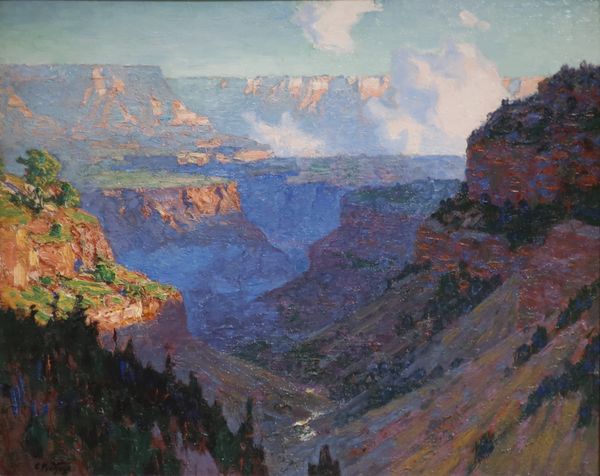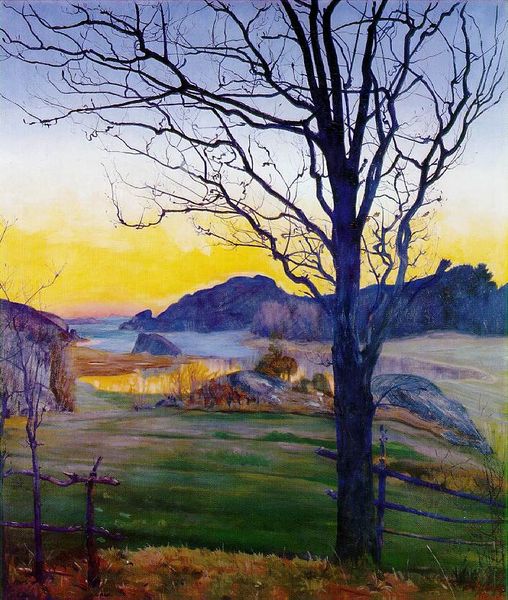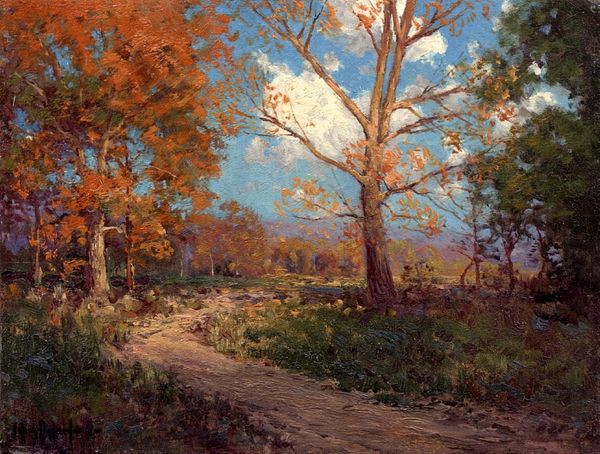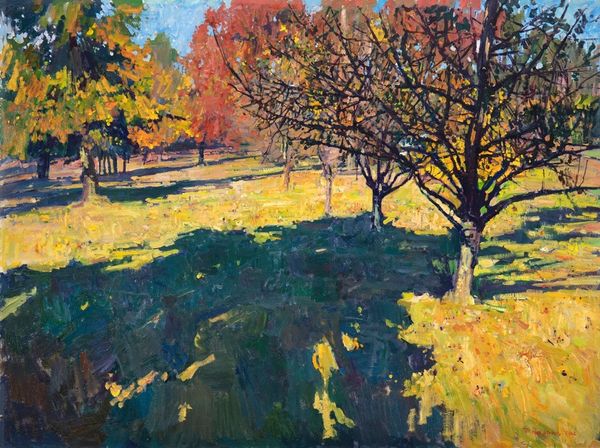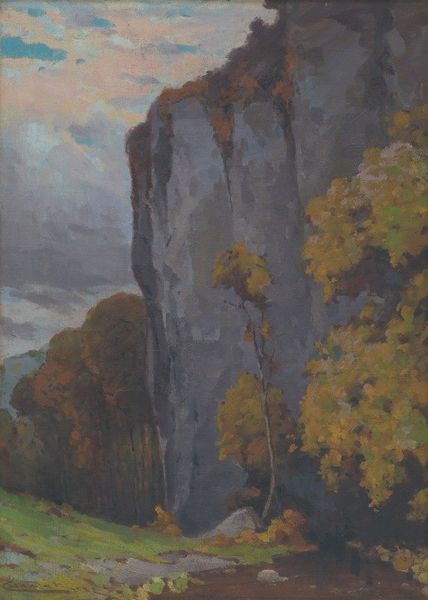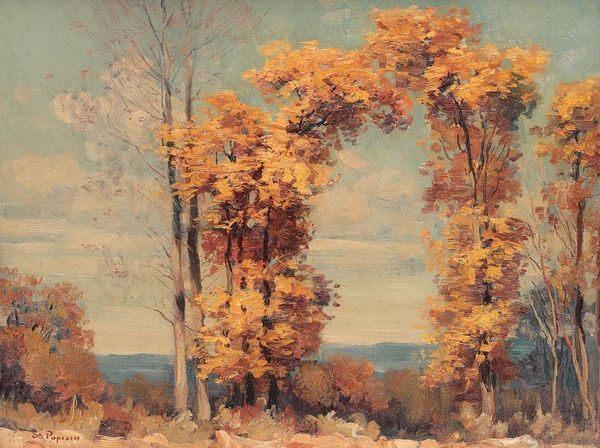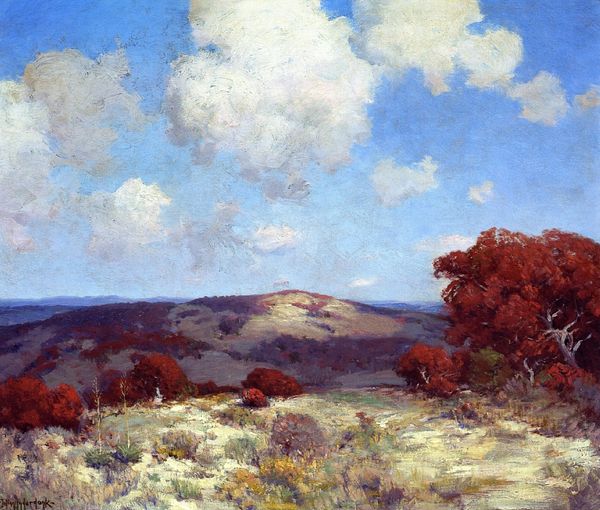
Copyright: Public domain
Curator: We’re looking at "Bluffs on the Guadalupe River, 17 Miles above Kerrville, Texas," a 1921 oil painting by Robert Julian Onderdonk. Editor: The dark blues of that foreground rock face immediately grab my attention. There's a real weight and roughness to the texture, making the light in the distance almost glow by comparison. Curator: Absolutely, Onderdonk's application of plein-air painting here contributes to its charm. It's a time capsule from when he was actively mythologizing the Texas landscape. Editor: Plein-air! Which suggests this wasn't a sanitized, studio vision, but a direct engagement with the location's elements. It’s all about the materiality of place then. Was Onderdonk conscious about accessible production and display here or was this only accessible for the elite? Curator: Onderdonk intended his art for broader civic engagement. He aimed to depict a distinctly Texan aesthetic—beauty tied to the land itself, meant for public consumption, a sort of democratization of landscape. However, in his time period that concept itself would’ve had limitations. Editor: Interesting tension! The light and accessible subject matter created through the intensive labor of plein-air is at odds with the limited accessibility. That play of light across the trees also hides his physical labor – that rough, direct materiality contrasts against the smooth and polished look. Curator: Indeed, the vibrant colors almost seem designed to evoke a sense of optimism. He made it during an era marked by industrial transformation in Texas and other social changes, it feels intentional, this harking back to a landscape ideal. Editor: And that accessibility also masks class assumptions—who gets to define "beauty," and who benefits from idealizing it? What equipment, whose land are you engaging with? So, while Onderdonk seems invested in depicting the common landscape, his position and the context of the era complicate that idea. Curator: The Texas landscape holds a certain social weight. But beyond the social history and civic intent, his commitment to landscape allowed the rise of many great regionalist painters and teachers, so he left quite an institutional legacy! Editor: So much to unpack in one small vista! It pushes you to engage with questions of labor, location, and social consumption. Curator: Precisely, Onderdonk gives us this moment of natural beauty filtered through artistic creation and also, socio-historical nuance.
Comments
No comments
Be the first to comment and join the conversation on the ultimate creative platform.
